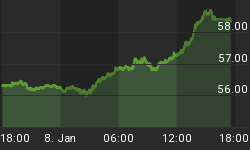Below is an extract from a commentary posted at www.speculative-investor.com on19th August 2004.
We can look at how the US stock market is performing in real (inflation-adjusted) terms by subtracting changes in one of the popular price indices from changes in the S&P500 Index. For example, if the S&P500 Index gains 10% and the CPI gains 3% over the course of a year then we can say that the S&P500 achieved a real return of 7% during this 12-month period. The problem is the official price indices greatly understate the effects of inflation because only a relatively small number of prices are used in their calculation and various tricks are employed to reduce the end result.
Rather than adjusting the S&P500 to account for changes in what are, in effect, bogus price indices, the real performance of the US stock market can be observed via the S&P500/gold ratio. Although not perfect by any means, S&P500/gold paints a picture that is much closer to reality than either S&P500/CPI or S&P500/PPI.
Looking at the below chart of the S&P500/gold ratio, two things stand out. First, the real S&P500 peaked in July of 1999 and then tested its peak in August of 2000 before trending strongly lower for about 2.5 years. Second, in real terms the so-called "new bull market" that began in March of 2003 has not been impressive. In fact, the real S&P500 only recovered about 21% of its preceding losses and, for all intents and purposes, peaked way back in July of 2003; meaning that all gains made in the nominal S&P500 Index between July of 2003 and March of 2004 were the result of inflation.
As far as the future is concerned we think it is helpful, in this case, to view the S&P500/gold ratio from a wave perspective because a clear 5-wave pattern -- three waves in the direction of the main trend separated by two corrective waves -- seems to be in progress. We've therefore indicated our wave count on the below chart. Our view is that the Wave 4 correction ended in June of this year (as at June-2004 the Wave 4 correction had already lasted longer than the Wave 2 correction), meaning that Wave 5 down to new lows is now underway. A drop below 2.55 is needed to confirm the correctness of this view whereas a move above 2.95 would indicate that the Wave 4 correction was still in progress.
It's interesting and somewhat strange, by the way, that the 2003-2004 correction in the S&P500/gold ratio occurred at the same time as the gold market was strong. We've included a chart of the gold price below the chart of the S&P500/gold chart so you can see what we mean by this. Note that prior to April-2003 gold and the S&P500/gold ratio had spent many years trending in opposite directions, but as of April last year the inflation began to lift the prices of everything. However, if our current views on the gold and stock markets 'pan out' then over the coming 12 months the traditional relationship (gold moving in the opposite direction to the S&P500/gold ratio) will re-assert itself.

One final point worth mentioning on this topic is that large leads/lags sometimes exist between the S&P500/gold ratio, the gold price and the dollar. For example, S&P500/gold embarked on a powerful downtrend in September of 2000 but the gold price didn't turn higher until 5-7 months later and the Dollar Index didn't turn lower until about 10 months later. In other words, our view that S&P500/gold has begun a decline to new lows is not inconsistent with our views that a correction low in the gold market is likely to occur in November and that the US$ will work its way higher into the first quarter of 2005.
















